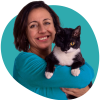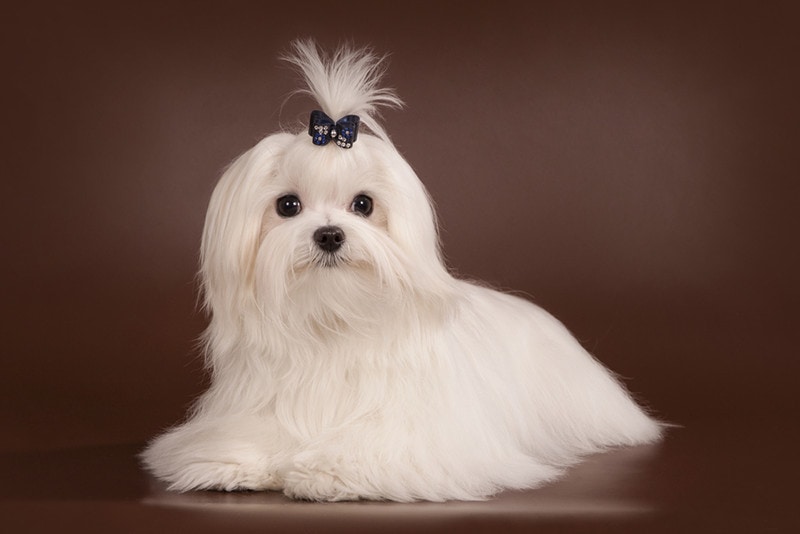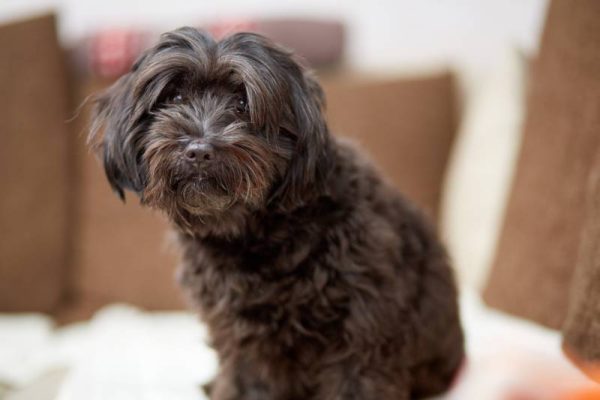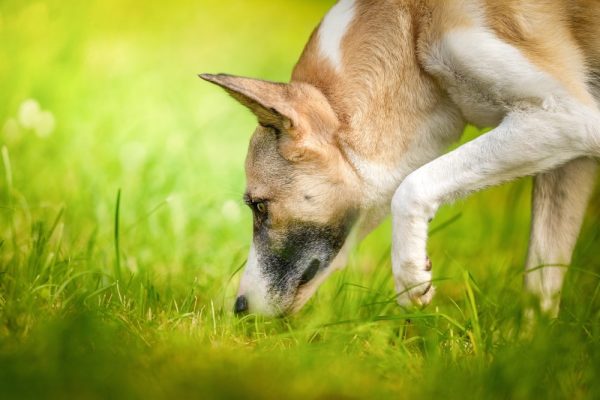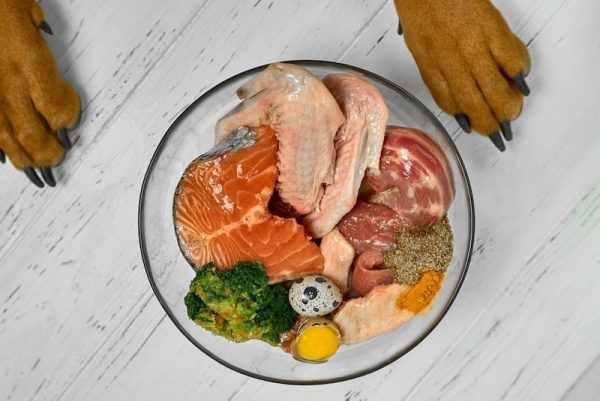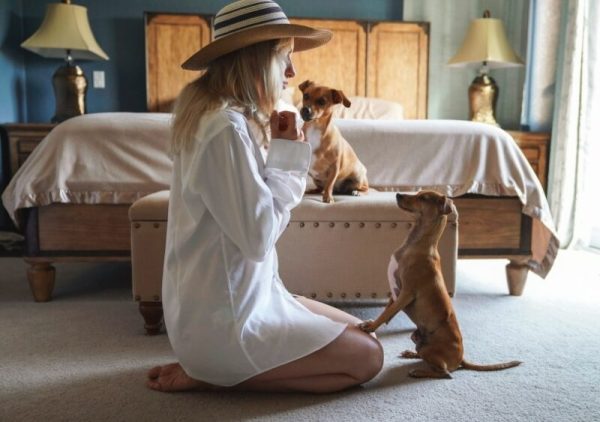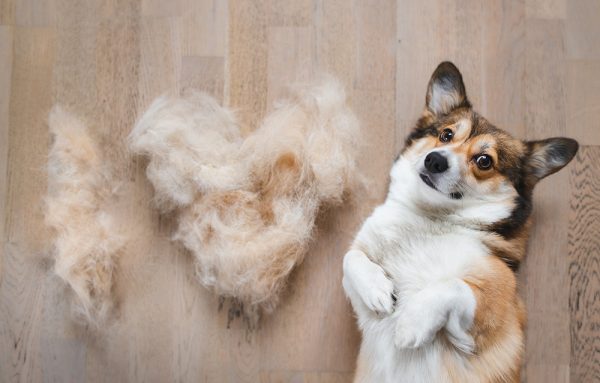In this article
It’s easy to fall in love with the Maltese, with those bright eyes and gorgeous white hair, but there are other factors to consider before making this dog a part of your household.
This is especially true if someone in your family has allergies or you just don’t want to clean up tons of dog hair. You might then wonder if the Maltese is known to shed a lot. The playful and charming Maltese dog is considered almost a no-shedder. However, this doesn’t make them hypoallergenic.
We do a deep dive into everything Maltese, shedding, and allergies here, so if you’re interested in learning more, please keep reading!

The Maltese Coat
The Maltese is a beautiful little dog that is known for their black eyes and nose amidst a glorious long coat of white hair. First of all, there is actually no such thing as a true hypoallergenic or a completely non-shedding dog. But some breeds don’t shed nearly as much as others, and the Maltese is one of those.
The first advantage that the Maltese have is their size: A small dog will typically shed less amount of hair than a large dog. Their second advantage is their silky long coat. Maltese have a single coat of hair, and these two combinations mean they have a lot less hair to shed. Dogs like Huskies have double coats of short fur that create blizzards of fur inside the home when brushed.
The Maltese shed, no question, but it’s minimal, especially when held in comparison to dogs like the Husky. Their coat is also quite soft and silky. It is traditionally kept long, which will undoubtedly shed more than if you keep it clipped shorter.
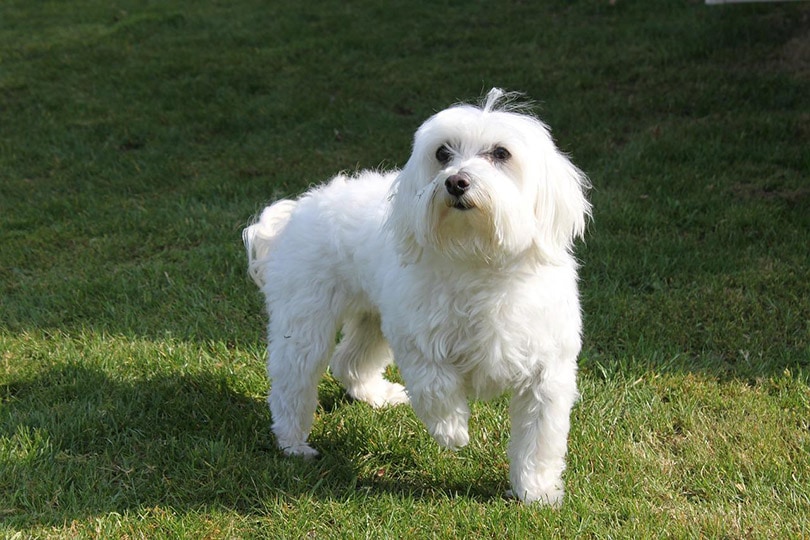
Pet Allergies
If the reason you’re considering the Maltese is that you’re looking for a hypoallergenic dog due to allergies, we get into all that here. Clearly, having a dog that doesn’t shed much might make them easier to live with if you have allergies to canines.
Bear in mind that dog allergies are actually triggered by proteins found in the animal’s dander, saliva, and urine and not the hair. These triggers not only hitch a ride on the hair, which covers the surfaces of your home, but are present in dander, which can’t be seen and is present everywhere. This is why so many people mistakenly believe that dog hair is the problem.
When the protein in the dander eventually finds its way into your lungs, your immune system is affected, and your allergies are triggered. This is why owning a dog that doesn’t shed much is more desirable for allergy sufferers—however, all dogs produce dander, even hairless dogs!
Allergies to Male or Female Dogs
So, we have good news! It seems that not everyone who believes that they have dog allergies is actually allergic to all dogs. Experts have found that approximately 40% of allergy sufferers are actually allergic to the prostate protein,1 which is only found in male dogs.
If this is the case with you, you might be able to live with a female dog without any bothersome allergies! The only way to determine if you fall into the 40%, though, is to have a special blood test that pinpoints the protein that you’re allergic to. Speak to your doctor if you’re interested in learning more.
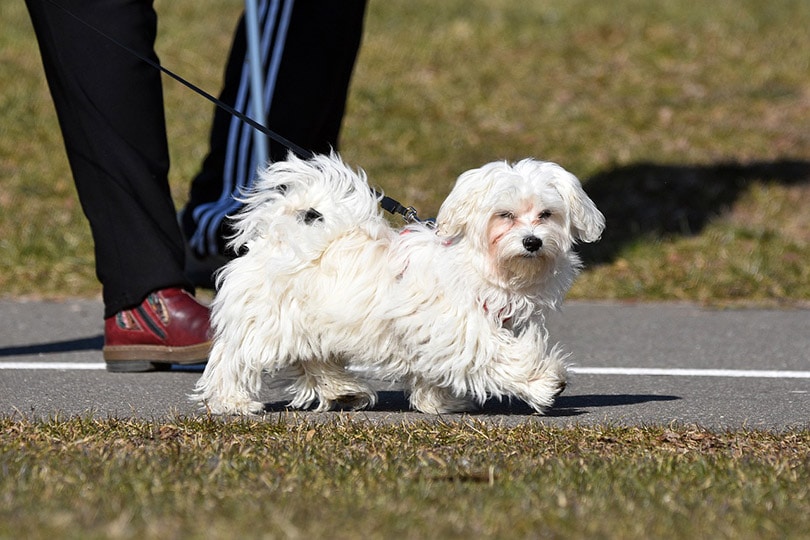
What Triggers Shedding?
As you’ve learned, the Maltese sheds minimally, but if they suddenly start shedding more than usual, it’s critical to take note of it and speak to your vet.
Stress
Stress might be the reason why a dog might suddenly start losing more hair than usual. These things may cause stress and subsequently, more shedding in your Maltese:
- Moving to a new house
- New member of the family (new baby)
- Sudden changes in your schedules
- New pet in the home
You get the idea. Even though the Maltese is considered quite adaptable, they are also sensitive dogs that can be affected by changes in their environment.
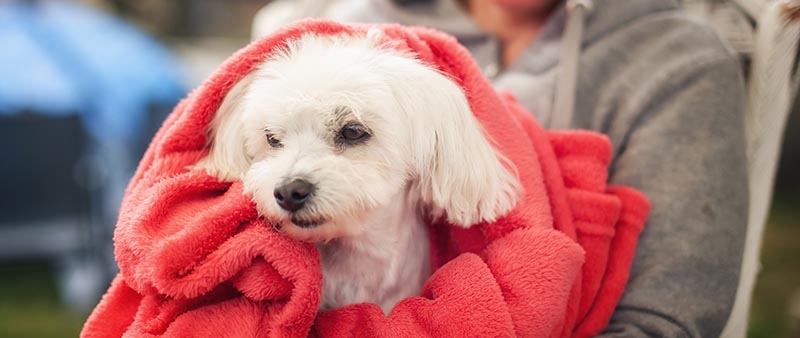
Medical Condition
Certain medical problems can cause hair loss, such as hormonal problems or certain cancers. Skin allergies can also cause hair loss, but usually, there will be other signs in addition to the hair loss. If you suspect your dog is experiencing stress or medical issues, bring them to your vet.
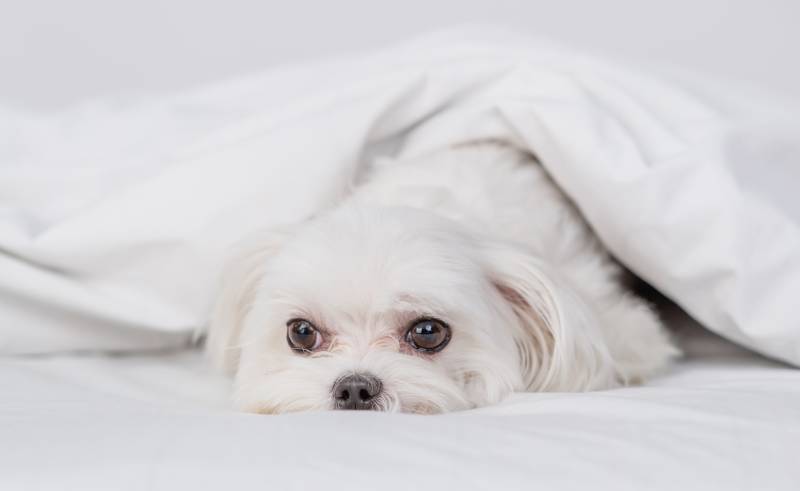
Managing the Shedding
Your Maltese will shed, so if you’re hoping for as little as possible, there are a few steps you can take to manage the shedding, including just regular grooming.
Brushing
Brushing is necessary for all dogs but especially for the Maltese, particularly if you keep their coats long.
If their coat is long, they will need brushing every day, but with a short coat, they will need brushing a few times a week. If the coat becomes tangled, it will likely become matted when the loose hair isn’t consistently removed through regular brushing.
Aim for a pin brush for regular brushing sessions, and look for one with bubble tips. Having a single coat makes it easier to accidentally scratch their skin. You can start brushing with the pin brush and finish with a slicker brush to smooth their fur.

Bathing
Maltese dogs usually need a bath roughly every 1 to 2 months with high-quality dog shampoo. Their skin and hair must be kept moisturized, which will help control a lot of shedding. Brush their coat before the bath.
Be aware that overbathing will strip their skin of its natural oils and consequently cause more shedding. So, keep to the bath schedule every one or two months unless otherwise necessary.
Use a dog shampoo made with natural ingredients, like oatmeal, to help with sensitive skin and moisturize the coat.
Our Favorite Products Selecting the right shampoo and conditioner makes the world of a difference when grooming your pup. Our favorite products are the duo by Hepper. The Oatmeal Pet Shampoo is formulated with aloe and oatmeal to soothe skin and hydrate the coat. The Pet Conditioner works at eliminating tangles and taming frizz and static. Both products are pH-balanced and formulated with pet-friendly ingredients, free of harsh soaps, chemicals, and dyes. Give this duo a try to heal and nourish your dog's coat, and leave them with an irresistible just-left-the-spa cucumber and aloe scent. At Dogster, we’ve admired Hepper for many years and decided to take a controlling ownership interest so that we could benefit from the outstanding designs of this cool pet company!
Image
Product
Details
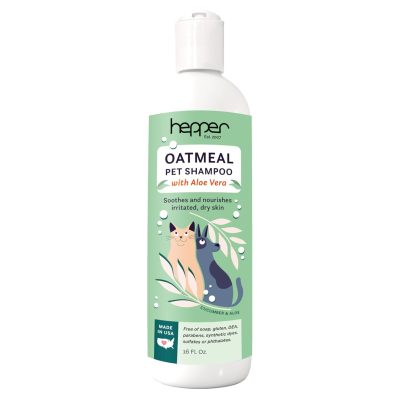
Hepper Oatmeal Pet Shampoo
Check Price

Hepper Pet Conditioner
Check Price
Having a High-Quality Diet
The food your Maltese eats will have a direct effect on the condition of their skin and coat. A high-quality dog food formulated for small dogs will provide them with the right balance of nutrients, which will keep the coat in great shape.
Look for food that is AAFCO-approved and contains high-quality ingredients. Picking up cheap dog food will influence their coat, so aim for good dog food, and ensure that they have plenty of fresh, clean water.
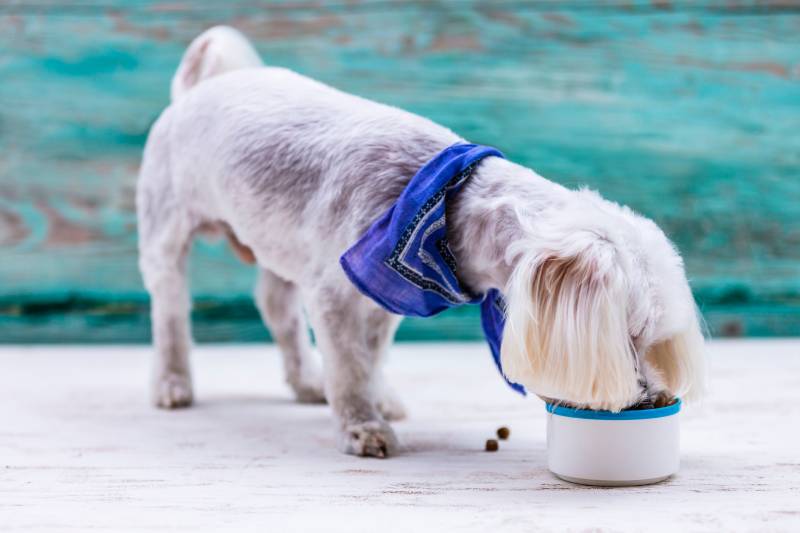
Taking Supplements
On some occasions, in addition to a healthy diet, some dogs benefit from taking supplements under their vet’s guidance. Fish oil supplements in either pill or liquid form can be a great addition for some dogs to improve their skin, joints, organ function, and overall health.

Final Thoughts
The Maltese definitely do not shed much unless there’s an issue with their health. Taking care of your dog’s coat includes regular brushing, occasional bathing, and ensuring that they have a healthy diet.
Take care of the outside and inside of your dog, and keep them as happy as possible, and you will see very little shedding and a super happy companion!
Featured Image Credit: Jolanta Beinarovica, Shutterstock
